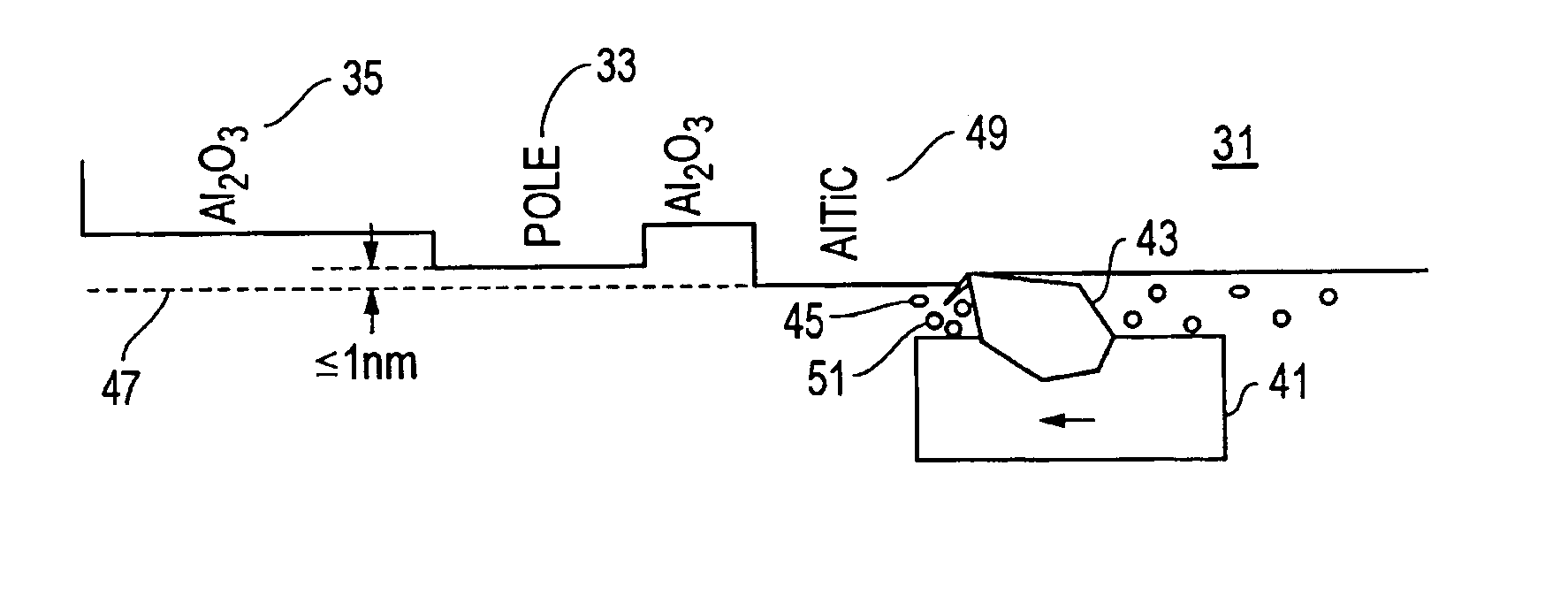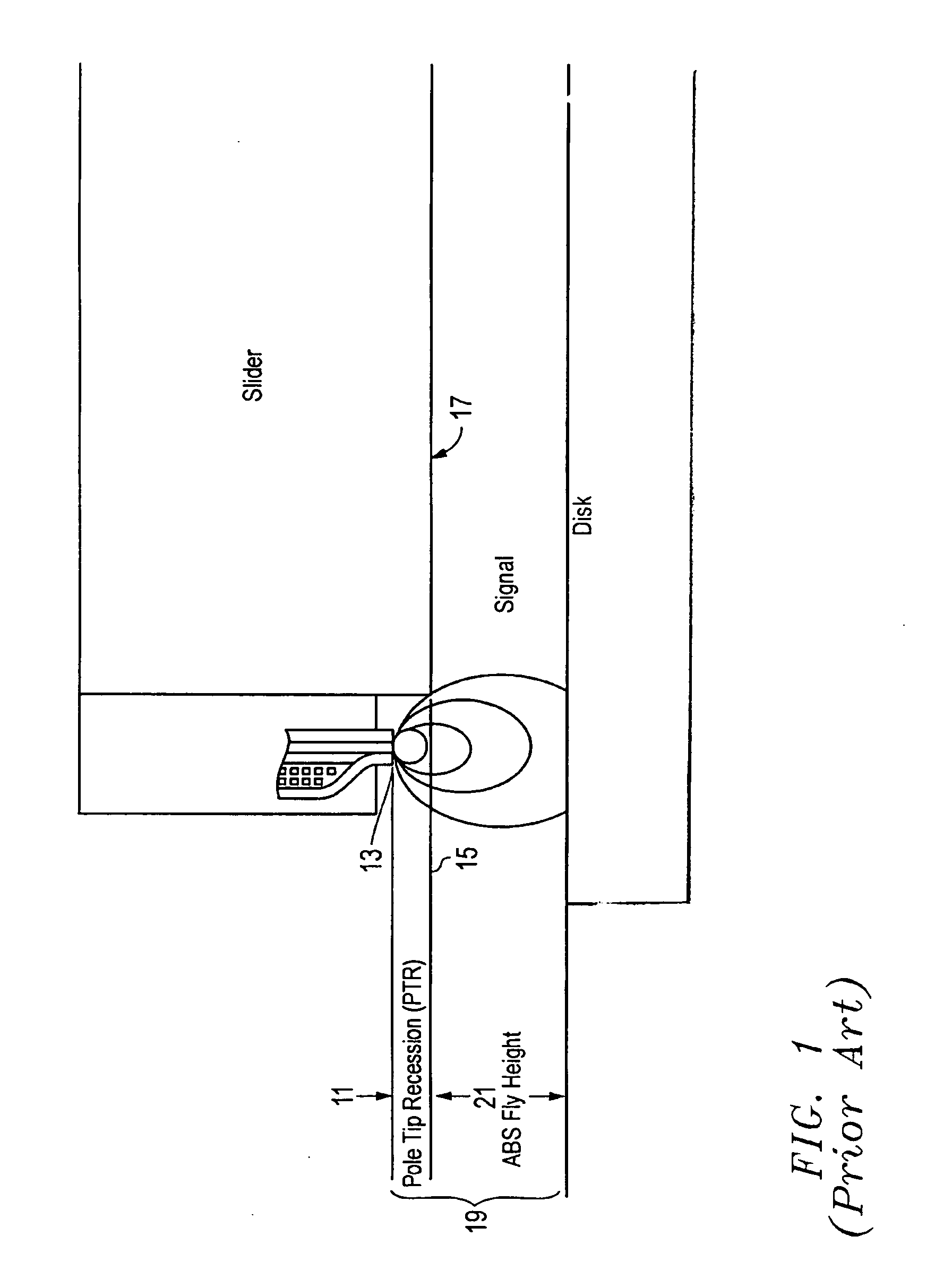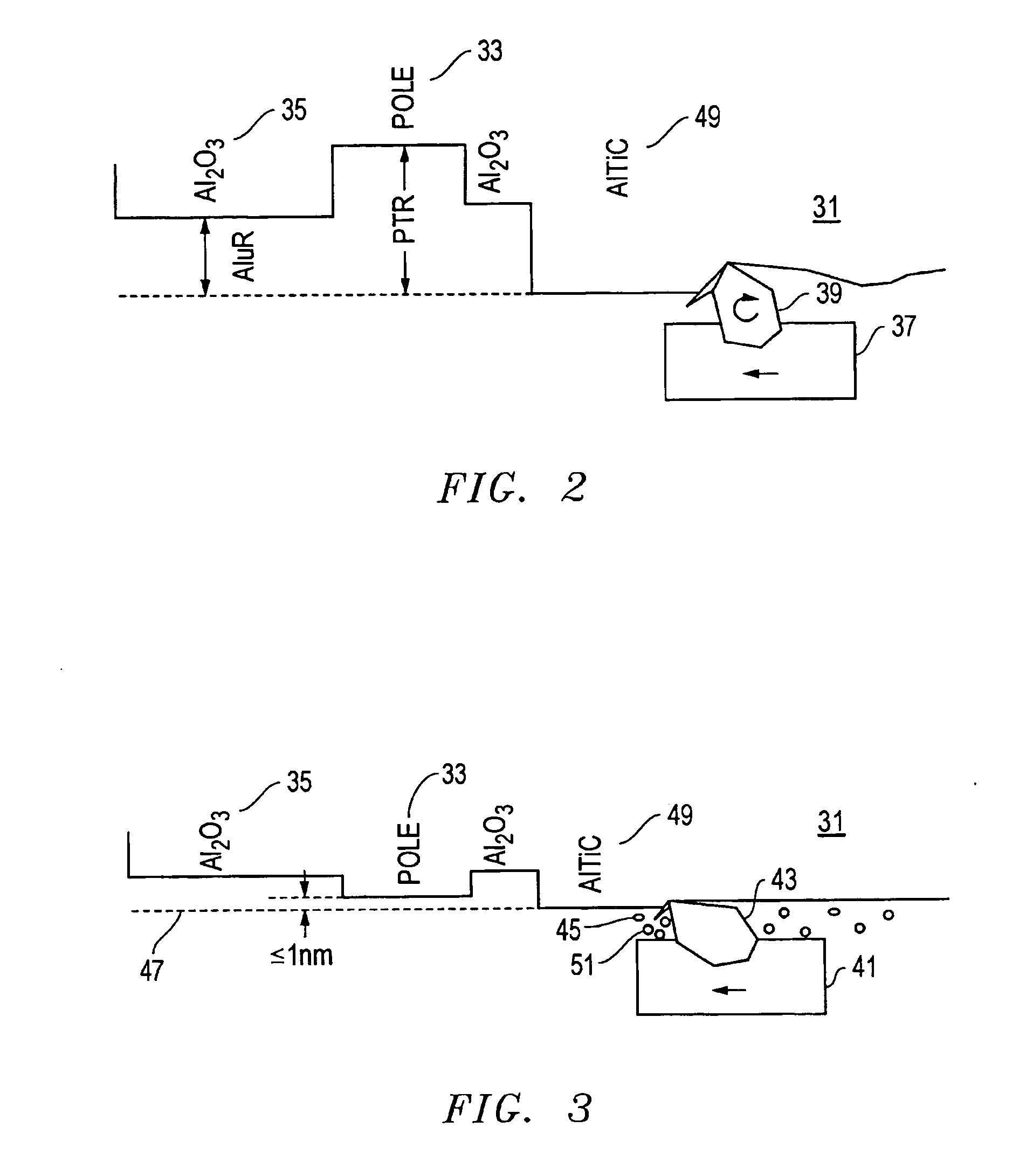Methodology of chemical mechanical nanogrinding for ultra precision finishing of workpieces
a nano-grinding and workpiece technology, applied in the field of nano-grinding workpieces, can solve the problems of sliding abrasive finishing process critically affecting the magnetic, electrical, mechanical performance, and the stability of recording heads, so as to reduce the variation of flying height and minimize the effect of magnetic space loss
- Summary
- Abstract
- Description
- Claims
- Application Information
AI Technical Summary
Benefits of technology
Problems solved by technology
Method used
Image
Examples
Embodiment Construction
[0023] Referring to FIGS. 2-4, one embodiment of the present invention comprises a system, apparatus, and method of treating a surface of a workpiece 31 in order to improve a surface finish thereof. The workpiece 31 may comprise many different objects, but is well suited for a hard disk drive slider that is formed from a variety of different materials, such as metallic and ceramic materials.
[0024] One embodiment of a method of the present invention first comprises providing a workpiece 31 having a first material 33 (e.g., pole material) and a second material 35 (e.g., ceramic, such as Al2O3) that differs from the first material 33. As depicted at block 61 (FIG. 4), the method further comprises lapping the workpiece 31 with a lapping substrate 37 and an abrasive slurry 39 between the workpiece 31 and the lapping substrate 37 such that portions of the first material 33 and the second material 35 are mechanically removed from the workpiece 31.
[0025] The method additional comprises na...
PUM
| Property | Measurement | Unit |
|---|---|---|
| surface roughness | aaaaa | aaaaa |
| surface roughness | aaaaa | aaaaa |
| size | aaaaa | aaaaa |
Abstract
Description
Claims
Application Information
 Login to View More
Login to View More - R&D
- Intellectual Property
- Life Sciences
- Materials
- Tech Scout
- Unparalleled Data Quality
- Higher Quality Content
- 60% Fewer Hallucinations
Browse by: Latest US Patents, China's latest patents, Technical Efficacy Thesaurus, Application Domain, Technology Topic, Popular Technical Reports.
© 2025 PatSnap. All rights reserved.Legal|Privacy policy|Modern Slavery Act Transparency Statement|Sitemap|About US| Contact US: help@patsnap.com



